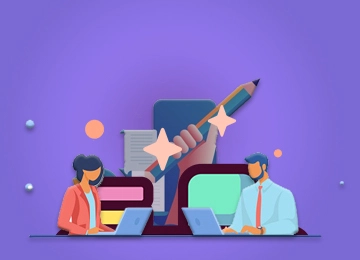Assignment
Achievement
Hire Experts
Reviews
Free Services
Grades
Offers
Order Now
50,000+
Orders Delivered
4.9/5.0
Star Rating
4000+
PhD Experts
24 x 7
Query Resolution
100 +
Subjects Catered
Our Experts
Reviews
Free Assignment Services
☞Title Pages - 100 Words
$05.00 free
☞Downloading Free Guide
$20.00 free
☞Upload Completed Tasks
$20.00 free
☞Genuine Content Report
$20.00 free
☞Consultation By Experts
$06.00 free
☞Unrestricted Revisions
$10.00 free
☞Grammar Check for Task
$25.00 free
☞Plagiarism Inspections
$25.00 free
Book Now and get Free Services Upto $0.00
Grades
Offers

1. PLACE YOUR ORDER
Whenever you fill out their order form, please read it carefully and then fill it out.

2. MAKE PAYMENT
Choose our secure payment method to pay for your order and collect your order from us with security.

3. GET YOUR DOCUMENT
Our writers write you plagiarism-free assignments and provide them to you before the deadline.
Our Experts

Search Assignments

Customers Reviews
Monarchy has existed in human society for a good deal of time. The first monarchy is known to exist in Japan in 660-585 BC when Emperor Jimmu reined over the Japanese territory. In India, the traces of monarchy in the form of gods and goddesses can also be seen in religious literature. Inhabitants of Ancient Egypt were ruled by "Pharaohs", considered the supreme power. One such emperor was Cleopatra, who is, to date, idolized for her beauty and cunning political tactics.

Today, modern governmental structures and rigid constitutional policies have swayed the monarchy in most nations. As a result, the monarchy that once ruled the entire world was only limited to 43 sovereign states. In most other nations, monarchs are reduced to the level of advisor.
But, one dynasty in particular that has stayed relevant for more than two centuries and is still the most famous Royal house in the world is the house of Windsor, more commonly known as the British royal family. Queen Elizabeth, King George V and King Charles are all heirs of the Windsor blood.
Previously known as Saxe-Coburg-Gotha, this native family of the United Kingdom has produced some of the most powerful kings and queens in history, whose mentions can be found in the history books of almost every country, thanks to their tradition of confiscating every parcel of land they found worthy of use.
Ever since the beginning, this British family has invaded 171 countries, almost 90 per cent of the entire nations. Only 22 nations have been ignored by the gimlet eyes of the Windsor family, who have been fortunate enough not to be enslaved by British people. But, unfortunately, the rests of us were not so fortunate. Centuries of oppression, looting and many massacres later, plenty of nations are liberated from British shadows, and only fourteen overseas territories remain under the British Umbrella.
Turning to history, whichever lands the British found befitting, they colonized with brainpower and firm political tactics. Hunger for money was the prime motivator for colonization; global supremacy was the second. Just by 1913, around 412 million people, 23 per cent of the global population, were under the direct influence of the British Empire. During that time, King George V was the ruling emperor of Britain. But, one ruler in particular, Queen Elizabeth II, was the most influential.
Under her reign, British Empire flourished and scaled unmarked territories. Last year, the Royal family was worth over 28 billion dollars thanks to her. She was also the ruling emperor in the British royal family, governing 32 sovereign countries for over 70 years. And reining other countries meant total control over all the available resources. Everything was aligned to befit the Queen, from metals to crops to land and even the currency.
Although Queen Elizabeth was the secQueenuccessor with the name, she experienced many firsts throughout her life.
The fourth and last emperor of the twentieth century, Queen Elizabeth, was also the first emperor to host a televised coronation ceremony in history, witnessed by more than 27 million people on television and another 11 million people bound to the ceremony by radio.
Apart from featuring on the most number of currencies, no new emperor can replace the aura the Queen had.
( Value assignment help is the one-stop shop for all your assignment needs)
You would be surprised to know that under Queen Elizabeth the second reign, more than 32 countries have her image embarked on their currencies. The first note featuring Queen's face was one pound note, printed baQueen's7th March 1960. The banknote was designed by Robert Austin seven years after the Queen was coroneted in 1952. Before that, the Queen could not seek permission to print her portrait on the currency.
Although post the Queen's death in September last year, a few countriesQueen as Australia, are phasing out the face of the Queen from their currency not, es Queene history will always be remembered as the individual appearing on the most number of currency notes, i.e. human history.
Canada was the first country to feature the Queen, which, back in 1935, printed the image of a 9-year-old princess on its twenty-dollar currency notes. It later featured the to-be-queen in 1951, and after her coronation in 1952, Queen's face was all over every currency. From Australia to Tobago, her face travelled beyond the physical borders of countries.
When the world was crashing between communism and capitalism and Korea & the United States were at war, her face travelled freely like wind, without worrying about the physical boundaries of the country or continent. She took the throne in the most challenging time and under more difficult circumstances. She was on tour to Kenya when the news of her father's demise broke out. And she had just lost her father when she was expected to handle seven independent countries- namely, the United Kingdom, Canada, Australia, New Zealand, South Africa, Pakistan and Ceylon, later called Sri Lanka.
The image of the British Monarch on currency reflects the cultural and political ties between the country and the British monarchy. For many of these countries, the image symbolizes national identity and sovereignty. It also reflects the strong economic and cultural ties within the Commonwealth of Nations.
While the world is too awestruck with "the royals", Australia has begun its phase-out of the British influence. Despite featuring the face of a British monarch on its currency, depicting the influence of British dominance, Australia has decided to showcase its cultural diversity. Although, its flag still incorporates the Union jack on the top-left corner of its flag, depicting the history of Britain's settlement in Australia.
Other than Australia, a few other countries have also phased out monarchs in the past too. As countries gained independence from British Rule, British-influenced currency was phased out, and they began to depict their local culture instead, just like Australia intended. For instance, Jamaica turned to Marcus Garvey, and India turned to Mahatma Gandhi's Portrait to depict their currencies post-independence in 1966 and 1947, respectively. In Burmuda, the currency was remodelled to feature local animals instead.
Using the British Monarch's image in the currency has faced significant challenges and controversies in recent years. Despite its significance as a symbol of national identity and sovereignty, there have been growing calls to reconsider the continued use of the image.
For example, in Canada, the image of Queen Elizabeth II has faced criticism from some quarters who argue that it is outdated and no longer reflects the country's contemporary identity. As a result, there have been calls to remove or update the image to reflect the Canadian people's diversity.
In New Zealand, using the British Monarch's image on the currency has also faced criticism, with some arguing that it represents a challenge to national identity and sovereignty. As a result, efforts have been made to replace the image with one that reflects the country's unique cultural heritage and values.
These examples highlight the growing challenge facing the use of the British Monarch's image on currency in many countries. Admittedly, the image may have been significant in the past. Still, its continued use is now the subject of intense scrutiny, reflecting a desire to move beyond the legacy of colonialism and create a unique and independent national identity.
In the face of other countries revolting, the country is facing dark clouds. The great recessions and the cost-of-living crises in the UK further hamper the British and its monarchs' power over its citizens.
Apart from chilling winter waves brewing the storms on the streets, frequent strikes and too frequent protests have also taken the National Health System of the UK by storm. Moreover, due to exiting the European Union and the shortage of medical staff, nurses and teachers have left the country no choice but to rob staff from other nations such as Zimbabwe.
Concluding the future of the British monarchy is a complex and uncertain endeavour. Yet, despite its rich and storied history, the institution has come under scrutiny in recent years as public sentiment and political priorities shift.
The monarchy's continued existence will likely be shaped by a confluence of factors, including shifting cultural attitudes, the evolving political landscape, and the monarchy's response to changing circumstances. As a result, some might argue that the institution is anachronistic, while others view it as a symbol of continuity and stability in an uncertain world.
It is impossible to predict the future of the British monarchy. Still, the institution will continue to play a central role in shaping the country's cultural and political identity. Whether it will endure in its current form or undergo significant changes remains to be seen. Still, the monarchy will remain an essential part of the United Kingdom's rich cultural heritage for generations.
( Value assignment has delivered millions of successful copies of research papers and assignments to assist students with their class homework)
Disclaimer: all content and intellectual property remain the exclusive property of value Assignment Help




No Comments